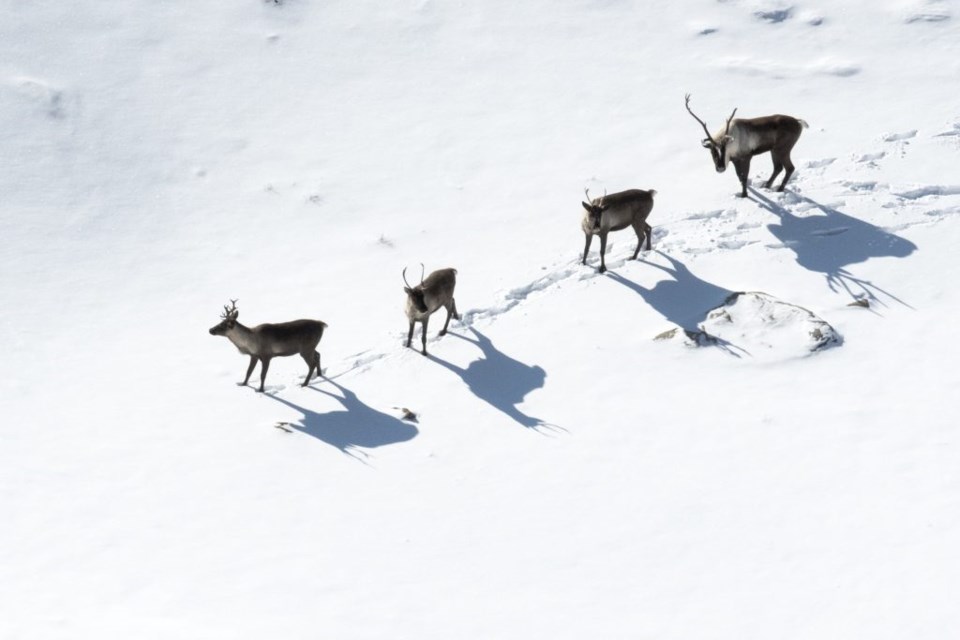
Joanne McQuarrie, Local Journalism Initiative Reporter | [email protected]
Human-wildlife conflict numbers continue to rise in Jasper National Park.
Viewing wildlife is a highlight for many people in the park and Parks Canada works to help keep those experiences positive.
But it was revealed in Jasper National Park’s annual report that in 2019, human wildlife conflict staff responded to 3,628 incidents, 300 of which had human safety concerns.
That’s an increase of more than 1,000 incidents from the previous year. The previous record was in 2018 with 2,185 human-wildlife conflict incidents. Of those, 223 had safety concerns.
It’s a trend that has been in place for years. In 2007, only 581 human-wildlife conflicts were reported. This increased by more than 1,300 a year by 2011, and went up to 1,884 in 2017.
2019 also presented the highest number of wildlife traffic jams on record in the park, at 395.
But Parks Canada has new initiatives to address the human-wildlife conflict incidents along the roadways.
A wildlife viewing restriction has been issued, requiring people to stay in their vehicles, there is a new message toolkit, a 'stay in your vehicle' campaign, no-stopping zones, and working with Tourism Jasper on training, messaging and videos for the tourism industry.
Parks Canada also has a team of trained wildlife management officers based in Jasper who work to keep both wildlife and people safe.
Their efforts include managing attractants like open food and garbage, using temporary warnings and area closures, the hazing of wildlife such as bears from areas of high human use and responding quickly to potential incidents year round.
There are also the Wildlife Guardians, who play an important role every summer in public education and in managing active wildlife jams along secondary roads like the Icefields Parkway and Maligne Lake Road.
In 2019, a prevention team called the 'Picnic Patrol' was launched to educate visitors about illegal camping, alcohol use and smoke at day use areas, restrictions for dogs at beaches, proper containment of wildlife attractants and other wildlife issues. The Picnic Patrol addressed 5,438 incidents from May to September.
Caring for caribou
It is not likely caribou remain in the Maligne Valley, Parks said in their report.
Last year, through DNA analysis and visual surveys, Parks estimated that the Tonquin herd had 31 animals, and the Brazeau and Maligne herds had ten or less.
But three aerial surveys in 2018 and 2019 failed to locate caribou tracks or animals and Parks Canada did not include their numbers in this year’s report, only listing the Tonquin herd with 31 animals and the Brazeau herd with ten animals or less.
Parks says these herds are too small to recover on their own.
But despite the numbers being low, they are stable.
And with a low wolf density, conditions for caribou survival and recovery are improving.
Parks Canada continues to monitor ecological conditions in caribou habitat for all four herds, is investigating “several options” to increase the caribou herds in the park, and exploring the feasibility of a conservation breeding program.
And there is one larger and healthier herd of caribou that lives on both sides of the park’s north boundary, the A La Peche herd, with an estimated 150 animals - an increase of ten from last year.
Camping numbers
Overall, visitation to Jasper National Park increased by five per cent over 2018 numbers.
But there was a drop in total camping nights as Whistlers was closed for reconstruction in 2019.
In 2019, there were 140,212 camping permits issued, compared to 199,550 in 2018 and 199,482 in 2017.
Whistlers Campground, Jasper’s largest campground, was built in the 1960s and hasn't had big upgrades since then. Parks Canada is installing a new registration centre, new washroom facilities, improved campgrounds and wider roads.
According to the annual report, it will open in May, 2021.
Last year, the Snaring Overflow Campground opened with regraded roads, better defined and levelled campsites and more facilities.
Tree talk
In 2019, forested areas around the edge of town were thinned to reduce forest fuels near people and property, and to keep exit and access routes clear and safe for travel in case of an emergency.
The Canadian Forest Service took on population sampling of pine beetles and, after a six-week period of extreme cold in the winter of 2018/19, it was estimated that 98 per cent of mountain pine beetle larvae were killed.
Parks Canada also provided free removal of fruit trees in Jasper, to decrease the chance of negative human-bear encounters. Two bears were euthanized by Parks last summer after becoming habituated to feeding from fruit trees and bird feeders in town.



